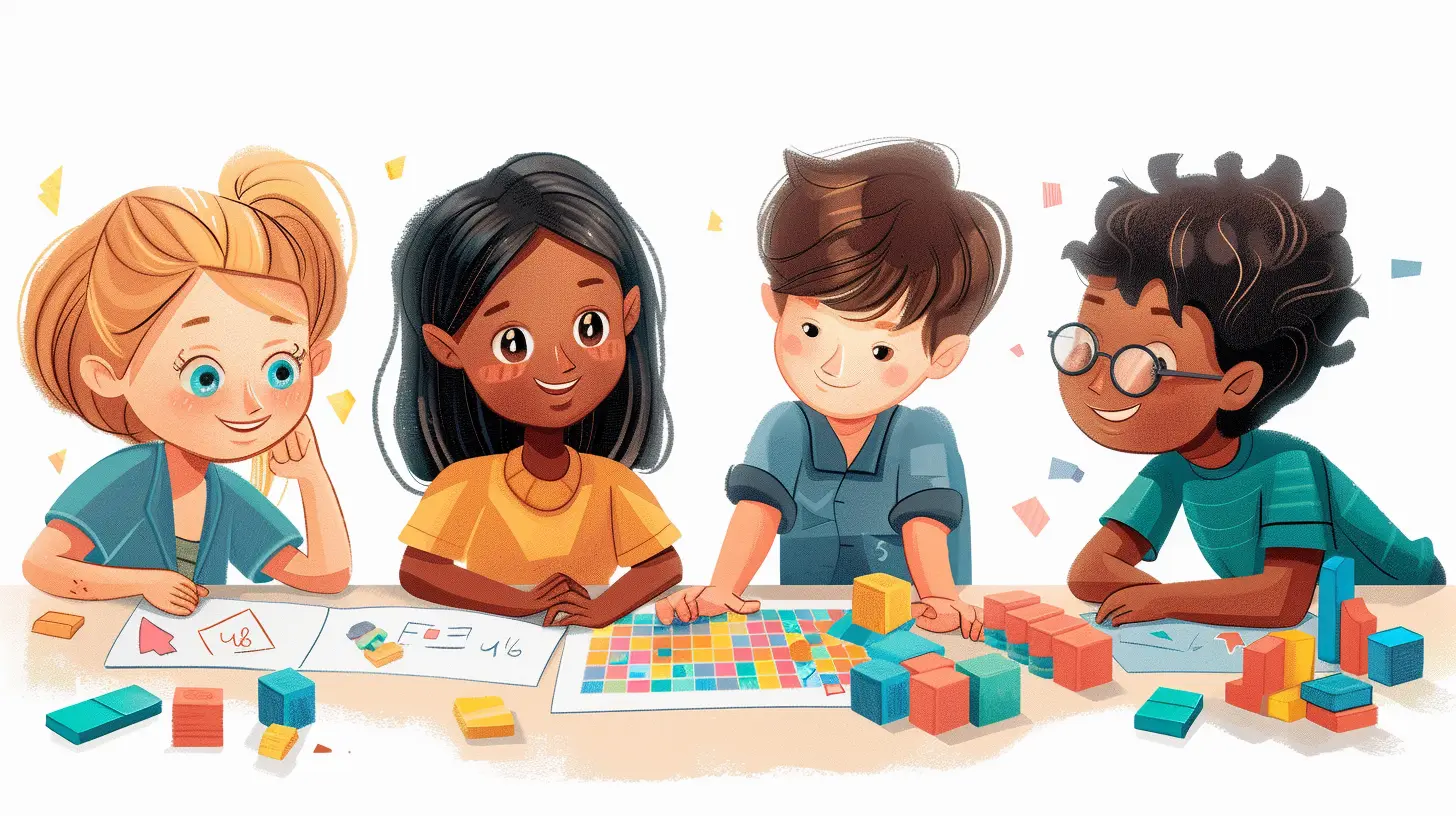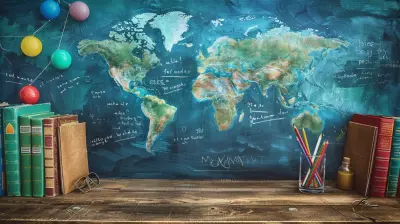Collaborative Problem Solving: Strategies for the Classroom
17 November 2025
Picture this: a group of students huddled around a table, bouncing ideas off each other, laughing, sometimes debating—but ultimately, working together to figure something out. Sounds like a fun classroom, right? That, my friend, is collaborative problem solving in action. And honestly? It’s more than just a buzzword in education. It's a game-changer.
In today’s classrooms, teaching kids how to solve problems as a team is just as important as teaching them about photosynthesis or algebra. Why? Because life is a giant group project. Whether they're resolving real-world issues, navigating social dynamics, or preparing for the professional world, students need to know how to collaborate effectively. So, how do we actually teach collaborative problem solving in a way that sticks? Let’s dive right in.
What Is Collaborative Problem Solving?
Let’s break it down: "collaborative" means working together, and "problem solving" is about finding solutions to tricky situations. So, collaborative problem solving (or CPS, if you're into acronyms) is the process of two or more people coming together to tackle a problem. It's less “every man for himself” and more “all hands on deck.”It’s not just about getting the answer right. It’s about communication, critical thinking, creativity, and yes—compromise. Think about any group work you’ve done. The magic isn't in the outcome only—it's in the process. Students learn to listen, to respect others’ ideas, to articulate their own, and to adapt when needed. These are life skills disguised as learning activities.
Why Does Collaborative Problem Solving Matter?
Here’s the thing: learning how to collaborate is no longer optional. It's essential. The World Economic Forum ranks problem-solving, collaboration, and emotional intelligence as top skills for the future. And what’s the workplace without teamwork? Pretty lonely, honestly.In school, we often focus on individual achievement. But in the real world, success is usually a team sport. Collaborative problem solving helps students:
- Build empathy and social skills
- Think critically and creatively
- Embrace different perspectives
- Take ownership and responsibility
- Prepare for future academic and career challenges
And let’s be real—working with others can be way more fun than flying solo (most of the time).
Obstacles to Effective Collaboration in Classrooms
Before we hop into strategies, let’s acknowledge the elephant in the room: collaboration isn’t always smooth sailing. You’ve probably seen a “group project” turn into a solo act, or an argument derail a brainstorming session. That’s normal.Common challenges include:
- Uneven participation (hello, freeloaders)
- Dominating personalities
- Miscommunication or confusion
- Lack of clear goals
- Poor time management
Sound familiar? Don’t worry—you’re not alone, and the good news is that each of these challenges has a fix. With the right strategies, collaborative problem solving can move from messy chaos to meaningful magic.
Strategies for Teaching Collaborative Problem Solving
Ready to transform your classroom with some real-deal strategies? Let’s roll up our sleeves and get practical.1. Set the Stage with Clear Roles
Group work gets messy when no one knows what they’re supposed to be doing. Assigning roles helps structure the chaos. Think of it like a band—everyone brings a different instrument to the table. You might assign roles like:- Facilitator – Keeps the group on track
- Timekeeper – Manages the clock
- Recorder – Takes notes or summarizes ideas
- Presenter – Shares the group’s conclusions with the class
Switch things up regularly so students experience different roles and responsibilities. It’s a great way to build well-rounded team players.
2. Start with Low-Stakes Challenges
Don’t throw students into the deep end right away. Start with icebreakers, team-building games, or simple puzzles. The goal here is to build trust and ease into collaborative dynamics.Try activities like:
- Building a tower from spaghetti and marshmallows
- Solving riddles as a team
- Designing a group logo and motto
If students trust each other and feel safe to share ideas, they’ll collaborate much more effectively when it really counts.
3. Teach Active Listening Skills
Let’s face it: most of us could work on being better listeners. Kids are no different. So before expecting top-tier collaboration, teach them how to actually hear each other out.Help them practice:
- Paraphrasing what someone else said (“So you're saying that...”)
- Asking clarifying questions
- Waiting their turn to speak (hard, but doable)
- Using body language that shows attentiveness
Listening is the foundation of collaboration. Without it, you’re just a bunch of people talking over each other.
4. Model Collaborative Problem Solving
Ever tried modeling the behavior you want to see? It works like a charm. Grab a fellow teacher or a group of students and walk through a sample problem together. Think aloud, brainstorm, argue (politely), and show how compromise and consensus-building look in real time.When students see problems getting solved collaboratively, it demystifies the process. It tells them: “Hey, this is how we do things here.”
5. Use Real-World Problems
Want your students to really engage? Give them a problem that matters. Kids can smell busywork from a mile away. Instead, let them sink their teeth into something juicy:- How can we reduce our school’s waste?
- What would a playground for everyone (all abilities) look like?
- How can we make history class more exciting?
Real-world problems give students a sense of purpose. Suddenly, this isn’t just about grades—it’s about impact.
6. Reflect and Iterate
After any collaborative activity, make time for reflection. Ask things like:- What went well?
- What was challenging?
- How did we communicate?
- What could we improve for next time?
This is where the magic happens. Reflection helps learning stick. It turns every project into a stepping stone for the next one.
Tips for Managing Group Dynamics
Let’s be honest—managing a classroom full of group work can be… a lot. Here are a few survival tips to make your life easier:- Mix up groups – Rotate members frequently to avoid cliques and encourage fresh perspectives
- Set ground rules – Create norms for respectful discussion and group decision-making
- Monitor and guide – Circulate during activities, ask questions, and offer subtle nudges when needed
- Be patient – Collaboration is a skill. It takes time, practice, and yes, a few facepalms along the way
Remember, you’re not just teaching content—you’re building collaborative citizens of the future.
Leveraging Technology for CPS
Digital tools can seriously level up collaborative problem-solving. Whether your class is in-person, hybrid, or online, there’s a tool out there to help.Some classroom favorites include:
- Google Docs or Slides – Real-time brainstorming and writing
- Padlet – Visual boards for sharing and organizing ideas
- Jamboard – Collaborative whiteboarding
- Flip – Video-based discussions
- Trello or Kanban boards – Planning and tracking group tasks
Just remember: the tech is a tool, not the teacher. Use it to support collaboration, not to replace it.
Assessing Collaborative Problem Solving
Now comes the big question: how do you grade group work fairly?The key is to assess both the process and the product. Here’s what that could look like:
Process Assessment:
- Participation levels- Communication quality
- Use of roles
- Reflection and self-assessment
Product Assessment:
- Creativity and originality- Relevance and accuracy
- Presentation and clarity
- Problem-solving effectiveness
You can also use peer evaluations and rubrics to keep things transparent. Let students in on what “good collaboration” looks like from the start.
Final Thoughts: A Team Sport Worth Playing
Collaborative problem solving isn’t just a strategy—it’s a mindset. Sure, it takes planning, patience, and a dash of chaos management. But the payoff? Totally worth it.When we empower students to work together, think critically, and tackle problems head-on, we’re not just teaching them how to get through school. We’re giving them the tools to thrive in work, relationships, and life itself.
So next time your students dive into a project, don’t dread the group dynamics. Embrace them. Guide them. And watch your classroom transform into a hive of creativity, connection, and collaboration.
Because hey—it turns out, two (or three or four) heads really are better than one.
all images in this post were generated using AI tools
Category:
Problem SolvingAuthor:

Monica O`Neal

